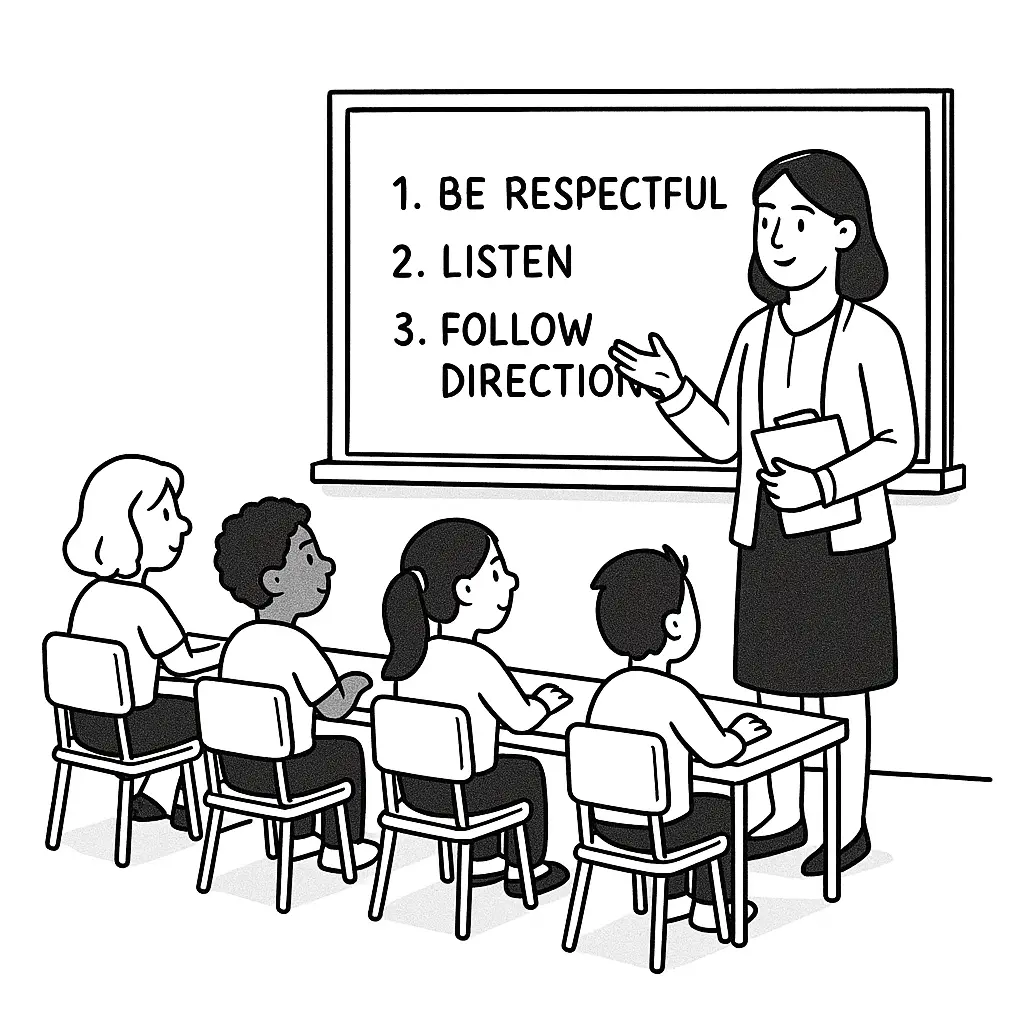Effective classroom management is the foundation of a productive, respectful, and engaging classroom. When teachers create clear expectations, foster strong relationships, and use proactive strategies, students thrive both academically and socially. This guide explores proven strategies that help build a safe, structured, and motivating environment for all learners.
✅ Why Classroom Management Matters
A well-managed classroom:
- - Reduces disruptions and maximizes instructional time
- - Promotes mutual respect and emotional safety
- - Encourages responsibility and self-regulation
- - Boosts student engagement and achievement
1. Build Positive Relationships with Students
Strong relationships are at the heart of classroom success. Students are more likely to follow rules and stay engaged when they feel respected and valued.
How to build strong relationships:
- - Greet students at the door with warmth and consistency
- - Learn about students’ interests, strengths, and challenges
- - Use positive language and model kindness
- - Actively listen to their feedback and concerns
- - Create a classroom culture where every voice matters
2. Set Clear Rules and Expectations
Clear expectations reduce ambiguity and set the tone for positive behavior. Involving students in this process increases ownership and cooperation.
Tips for setting rules:
- - Collaboratively create 3–5 positively worded rules (e.g., "Be respectful" instead of "Don't be rude")
- - Post rules visually in the classroom and refer to them often
- - Reinforce with consistent praise and calm reminders
- - Be fair and transparent with all students
3. Establish Routines and Procedures
Predictable routines help students feel secure and reduce behavioral issues caused by uncertainty or downtime.
Effective routines include:
- - Morning entry and class start procedures
- - Smooth transitions between activities
- - Directions for group work or independent tasks
- - Use of visual cues, timers, or countdowns
- - Practicing procedures until they become automatic
4. Engage Students in Learning
Boredom leads to misbehavior. Lessons that are interactive and relevant keep students focused and motivated.
Strategies to increase engagement:
- - Mix direct instruction with group discussions, stations, and hands-on tasks
- - Incorporate games, storytelling, or real-life scenarios
- - Provide opportunities for student choice and voice
- - Make lessons culturally responsive and personally meaningful
5. Use Positive Reinforcement
Positive behavior should be noticed, encouraged, and rewarded. Recognition builds confidence and motivates continued effort.
Examples of reinforcement:
- - Specific praise (e.g., “I appreciate how you waited patiently.”)
- - Class point systems, badges, or rewards
- - Highlighting growth, not just high grades
- - Celebrating small wins and progress
6. Respond to Misbehavior with Consistency and Respect
Misbehavior is often a sign of unmet needs. Responding with empathy and structure supports both the student and the group.
Best practices:
- - Address misbehavior calmly and privately
- - Focus on the behavior, not the character
- - Use logical consequences that teach, not punish
- - Ask restorative questions: “What happened? How can we fix it?”
- - Follow through consistently — unpredictability creates resentment
As GCU highlights, teachers should avoid punishing the entire class for the behavior of a few students. Doing so can demotivate well-behaved students and actually encourage misbehavior. Targeted, fair responses are more effective and respectful.
7. Be Proactive and Flexible
Preventing problems is more effective than reacting to them. Being reflective and adaptable helps meet evolving student needs.
Proactive strategies include:
- - Anticipate challenges and plan ahead (e.g., movement breaks, attention resets)
- - Adjust lessons or expectations when necessary
- - Rearrange seating to reduce distractions
- - Use silent signals for behavior redirection
- - Reflect regularly on what’s working and what’s not
🔄 Additional Advanced Strategies
8. Incorporate Emotional Regulation Tools
When students learn to manage their emotions, behavior improves naturally.
Try this:
- - Create a calm-down corner with tools like timers, fidgets, journals
- - Teach emotional vocabulary and self-reflection
- - Use mood check-ins to open the day
- - Introduce mindfulness practices like breathing or guided reflection
9. Foster Peer Accountability and Collaboration
Students are more invested when they feel responsible for themselves and their peers.
Ideas:
- - Use partner or group contracts
- - Facilitate peer feedback and conflict resolution
- - Build class norms together and revisit them regularly
- - Encourage collaborative goal-setting
- - Highlight team wins as well as individual growth
10. Leverage Data to Guide Behavior Supports
Tracking behavior helps you see patterns and intervene early.
What to track:
- - Frequency and context of misbehavior
- - Participation and on-task time
- - Trends in engagement by subject or time of day
- - Use simple logs, charts, or digital tools (like Lekktura) to stay organized
🔑 Key Takeaways
- - Relationships first: Trust and rapport create the foundation for behavior and learning
- - Clarity matters: Expectations, rules, and routines should be simple, visual, and consistent
- - Reinforce the positive: Celebrate what students do well — catch them being great
- - Stay calm and fair: Correct with care, stay consistent, and always maintain student dignity
- - Keep growing: Reflect on your approach, gather feedback, and adjust when needed
FAQ: Classroom Management
1) How many rules should I have in my classroom?
Ideally 3–5 clear and positively worded rules. Keep them simple, consistent, and posted visibly.
2) What’s the best way to start the year strong?
Spend the first week explicitly teaching expectations, building relationships, and practicing routines — it sets the tone for the year
3) How do I keep students engaged all day?
Break up long tasks, use varied formats (visual, auditory, kinesthetic), and allow for student voice and movement throughout the day.
4) What should I do if a student constantly misbehaves?
Seek the root cause. Build a relationship, involve support staff if needed, and use restorative, not punitive, responses.
5) How do I manage behavior without using rewards all the time?
Focus on intrinsic motivators: meaningful praise, growth tracking, autonomy, and classroom culture. Use rewards sparingly and intentionally.
Final Thoughts
Effective classroom management isn’t about strict control — it’s about creating an environment where every student feels safe, respected, and ready to learn. By combining proactive planning, strong relationships, engaging instruction, and consistent follow-through, teachers can build classrooms that thrive.




